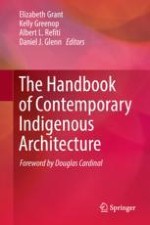2018 | OriginalPaper | Buchkapitel
15. Tangentyere Design: Architectural Practice and Cultural Agency in Central Australia
verfasst von : Andrew Broffman
Erschienen in: The Handbook of Contemporary Indigenous Architecture
Verlag: Springer Singapore
Aktivieren Sie unsere intelligente Suche, um passende Fachinhalte oder Patente zu finden.
Wählen Sie Textabschnitte aus um mit Künstlicher Intelligenz passenden Patente zu finden. powered by
Markieren Sie Textabschnitte, um KI-gestützt weitere passende Inhalte zu finden. powered by
